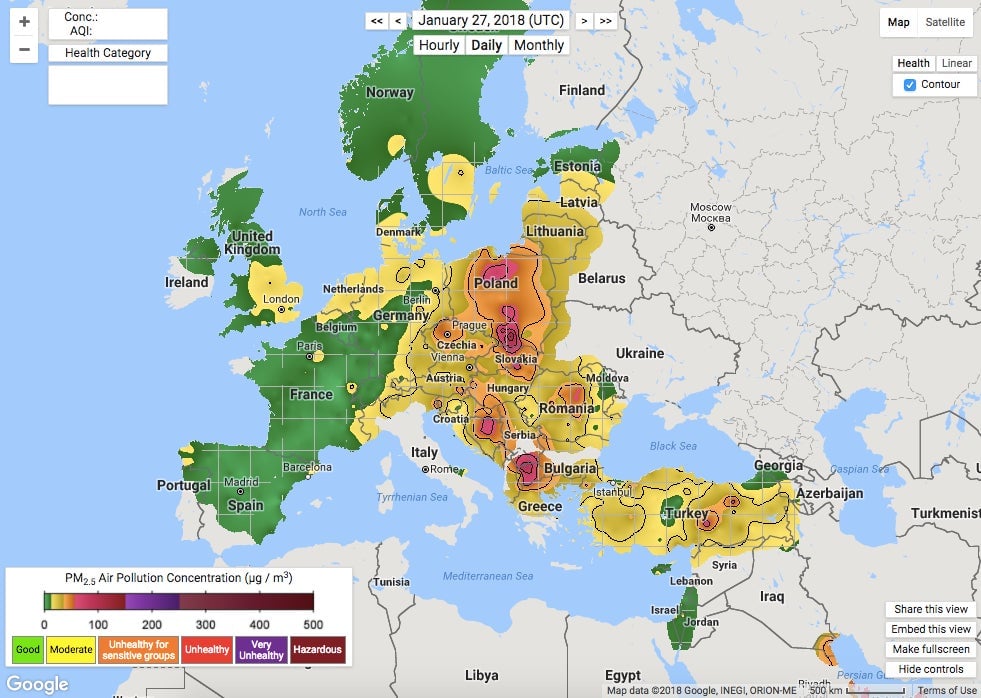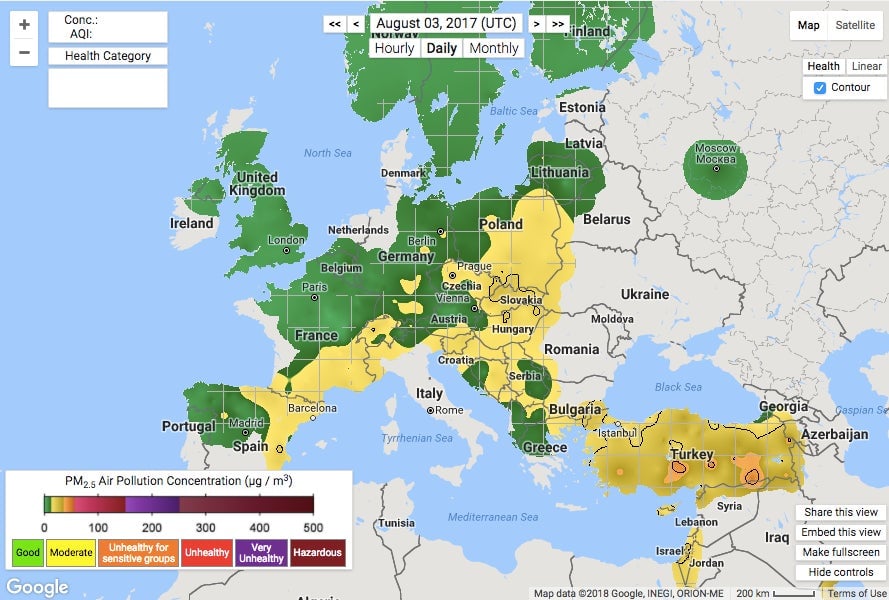There’s an iron curtain dividing Europe into safe and dangerous places to breathe
According to air monitoring databases, those living in Eastern Europe and the Balkans are typically breathing more toxic particulate air pollution than their neighbors in Western Europe.

According to air monitoring databases, those living in Eastern Europe and the Balkans are typically breathing more toxic particulate air pollution than their neighbors in Western Europe.
Julian Popov, a fellow at the European Climate Foundation and the former environment minister of Bulgaria, noted the division on Twitter this week (Jan. 28):
Popov cited the European Air Quality Index, but for another view of the same data, the real-time air-quality map maintained by US-based nonprofit Berkeley Earth shows the divide very clearly. (In it, some countries, like Italy and Romania, are missing because they haven’t connected the data from their monitors to the global air-quality index system yet, according to Popov.)

A 2017 report from the World Health Organization found Eastern European and Balkan countries to have the most annual air pollution-related deaths in Europe. Bulgaria, in particular, has struggled with some of the worst air in Europe in the past decade or so. “Bulgaria has a history of Soviet-era industrialization with scant attention paid to environmental issues,” the New York Times wrote in 2013. Sofia, the Balkan country’s capital city, is currently enduring its second air-pollution crisis in the last 12 months. The mayor of the city asked residents this week not to drive their cars and urged children and the elderly to avoid spending time outdoors.
Bosnia and Herzegovina, Macedonia, Hungary, and Poland are other poor performers when it comes to air pollution. Cities in Poland accounted for 33 of the 50 most-polluted cities in Europe as of 2017, according to the World Health Organization.
Popov attributes the disparities to fewer air-pollution mitigation policies, more “solid fuel heating” (meaning more wood and coal stoves), and, generally, less wealth, in Eastern European and Balkan countries compared to the rest of Europe. Western Europe has mostly moved away from coal-fired power plants (or at least has pledged to reduce coal consumption to meet climate goals), but in Eastern Europe, they are still widely in use. Coal “predominates” as an energy source in Poland, for example, according to the New York Times. This is largely due to costs—coal remains one of the most affordable sources of energy.
Bloomberg Business called this divide the new “coal curtain” (paywall) and Power magazine notes that “[i]n the east, Poland and the Czech Republic have both announced an expansion of production of their domestic hard and lignite coal reserves, the dirtiest of all coals.”
Winter is particularly bad for air quality in Eastern Europe, because wood and coal stoves are used more, and coal-fired power plants are running at full strength to provide heating. Sofia has the added disadvantage of being inside a bowl-shaped valley that traps air pollution in the city.
However, while the disparity between Eastern and Western Europe is less stark in summer, it doesn’t disappear, as this map from August 2017 shows:
